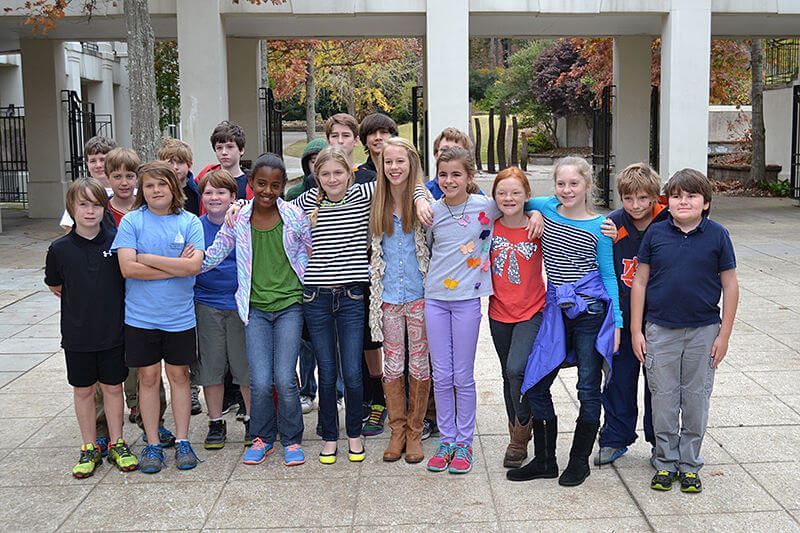
Middle school is a pivotal stage in a child’s education, where they transition from elementary to high school and begin exploring their interests and passions. While textbooks and classroom lectures provide foundational knowledge, there’s something truly special about learning outside the traditional setting. Do middle schoolers have field trips? Absolutely! These educational excursions offer students invaluable opportunities to apply what they learn in a practical context, fostering deeper understanding and engagement.
This article delves into the world of middle school field trips, exploring their numerous benefits, diverse types, planning considerations, engaging activities, and lasting impact on student learning. From museums and historical sites to science centers and nature reserves, we’ll uncover how these real-world adventures enrich the educational experience for middle schoolers.
Benefits of Middle School Field Trips
Field trips offer a wealth of benefits that extend far beyond the classroom walls. They provide students with hands-on experiences, stimulate curiosity, and foster a love of learning.
- Enhanced Understanding: Field trips bring abstract concepts to life, allowing students to see and interact with them in a tangible way. For example, a visit to a science museum can solidify their understanding of physics principles through interactive exhibits, while a trip to a historical site can make history come alive.
- Real-World Application: Field trips bridge the gap between theoretical knowledge and practical application. Students can observe real-world examples of concepts they’ve learned in class, making connections and deepening their comprehension.
- Development of Social Skills: Group field trips provide opportunities for students to collaborate, communicate effectively, and build teamwork skills. They learn to navigate social situations, respect others’ perspectives, and work together towards a common goal.
Types of Educational Field Trips

The possibilities for educational field trips are truly endless, catering to diverse interests and learning styles.
- Museums and Art Galleries: These institutions offer immersive experiences that expose students to history, art, science, and culture. They can explore artifacts, examine masterpieces, and engage with interactive exhibits.
- Historical Sites: Visiting historical landmarks allows students to step back in time and witness firsthand the events that shaped our world. They can learn about different civilizations, explore ancient ruins, and gain a deeper understanding of history’s impact on society.
- Science Centers and Zoos: These destinations provide hands-on learning opportunities in science and nature. Students can conduct experiments, observe animals in their natural habitats, and explore the wonders of the natural world.
Other Field Trip Ideas:
- Nature Reserves and Parks
- Local Businesses and Industries
- Universities and Colleges
- Performing Arts Centers
Planning a Successful Field Trip
A well-planned field trip is essential for ensuring a safe, educational, and enjoyable experience for all participants.
- Establish Clear Objectives: Define the learning goals for the trip and align them with the curriculum. What specific concepts or skills do you want students to gain from this experience?
- Choose an Appropriate Destination: Select a location that is relevant to the learning objectives and accessible to your students. Consider factors such as distance, cost, and safety.
Develop a Detailed Itinerary: Create a schedule that outlines the activities, timings, and transportation arrangements. Ensure there is enough time for exploration, interaction, and reflection.
Communicate Effectively: Keep parents informed about the trip details, including dates, costs, required permissions, and packing lists. Encourage their involvement and support.
- Safety First: Prioritize student safety by implementing clear rules and guidelines, assigning chaperones, and conducting a risk assessment. Ensure all necessary permits and insurance are in place.
Engaging Activities During Field Trips

To maximize the educational value of field trips, incorporate interactive activities that encourage active learning and critical thinking.
- Guided Tours: Arrange for knowledgeable guides to lead students through museums, historical sites, or other destinations, providing insights and answering questions.
- Interactive Exhibits: Encourage students to engage with hands-on exhibits, experiments, or demonstrations that allow them to apply their knowledge and explore concepts in a practical way.
Scavenger Hunts: Create themed scavenger hunts that challenge students to find specific information or objects related to the trip’s theme. This promotes observation skills, teamwork, and problem-solving.
Journaling and Reflection: Encourage students to keep journals or write reflections about their experiences, capturing their thoughts, observations, and insights gained during the trip.
- Group Discussions: Facilitate discussions among students to share their perspectives, ask questions, and connect their learning to real-world examples.
Impact on Student Learning
Field trips have a profound impact on student learning, fostering academic growth, personal development, and a lifelong love of learning.
- Increased Engagement and Motivation: Experiential learning through field trips captivates students’ attention and motivates them to learn. They are more likely to be engaged in class discussions and assignments related to the trip’s theme.
- Deeper Understanding and Retention: Field trips provide concrete examples and real-world applications of concepts learned in the classroom, leading to a deeper understanding and improved retention of information.
- Development of Critical Thinking Skills: Field trips encourage students to observe, analyze, interpret, and draw conclusions based on their experiences. They learn to think critically about the world around them and develop problem-solving skills.
Conclusion
Do middle schools have field trips? Absolutely! Field trips are an invaluable component of a well-rounded education for middle schoolers. They offer countless benefits, from enhancing understanding and fostering social skills to sparking curiosity and igniting a passion for learning. By incorporating diverse types of field trips, engaging activities, and thoughtful planning, educators can create memorable experiences that enrich the educational journey for all students.
